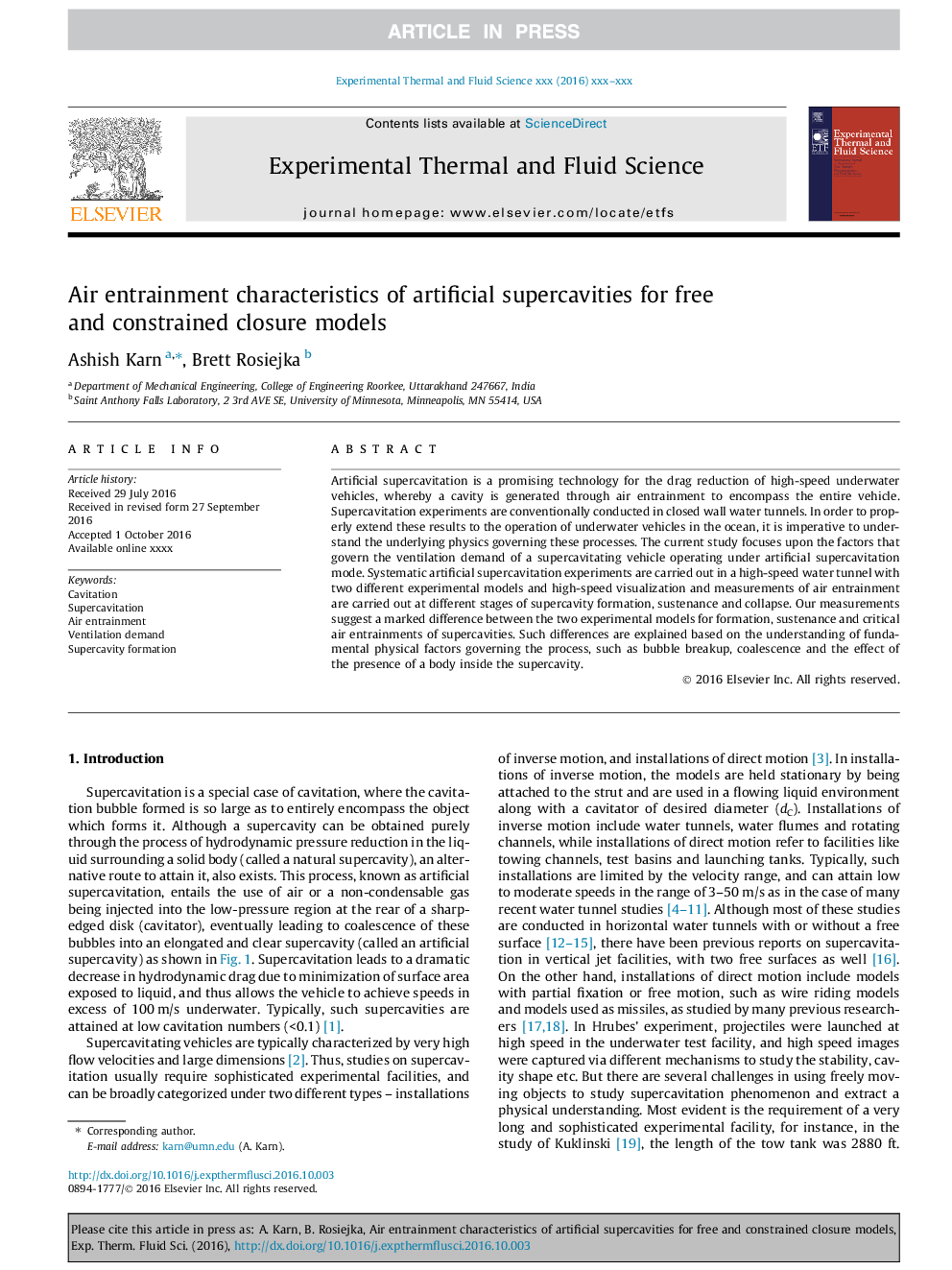| Article ID | Journal | Published Year | Pages | File Type |
|---|---|---|---|---|
| 4992552 | Experimental Thermal and Fluid Science | 2017 | 6 Pages |
Abstract
Artificial supercavitation is a promising technology for the drag reduction of high-speed underwater vehicles, whereby a cavity is generated through air entrainment to encompass the entire vehicle. Supercavitation experiments are conventionally conducted in closed wall water tunnels. In order to properly extend these results to the operation of underwater vehicles in the ocean, it is imperative to understand the underlying physics governing these processes. The current study focuses upon the factors that govern the ventilation demand of a supercavitating vehicle operating under artificial supercavitation mode. Systematic artificial supercavitation experiments are carried out in a high-speed water tunnel with two different experimental models and high-speed visualization and measurements of air entrainment are carried out at different stages of supercavity formation, sustenance and collapse. Our measurements suggest a marked difference between the two experimental models for formation, sustenance and critical air entrainments of supercavities. Such differences are explained based on the understanding of fundamental physical factors governing the process, such as bubble breakup, coalescence and the effect of the presence of a body inside the supercavity.
Related Topics
Physical Sciences and Engineering
Chemical Engineering
Fluid Flow and Transfer Processes
Authors
Ashish Karn, Brett Rosiejka,
